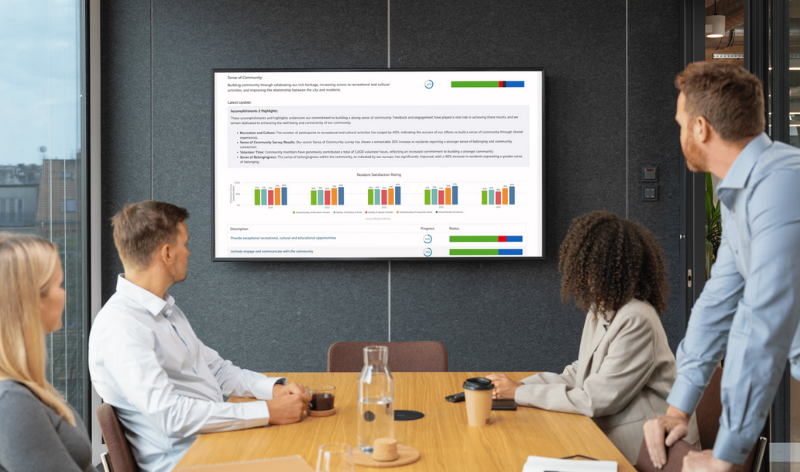Contents
“The only thing necessary for the triumph of evil is for good men to do nothing.” John Stuart Mill
Some experiences etch themselves permanently into your memory. Even if you do not realize it in the moment, they creep back into your mind again and again. This was the case when, in late 2020, my husband returned home from work and dropped onto the couch, his face etched with exhaustion and defeat. Exasperated, he sighed, “the real pandemic is opioids—it is so bad.”
My husband has been a firefighter for nearly a decade. This was my first experience seeing him truly impacted by what he had seen in the 24-hour shift the day prior. I would venture to say it is still the most distressed I have seen him. I try not to push for details—I want to be sensitive and respectful, not just of him, but also the people he assists every day. However, that day opened my eyes to what was happening in North America with regards to the opioid epidemic—and what local governments might be able to do about it.
Understanding the Context of the Opioid Crisis
The history of opioids dates back to the 19th century. Opium used through the civil war as a painkiller led to what was coined, “soldier’s disease”, but clinically would be recognized as widespread addiction. The result was that in the 1920s, heroin was banned for medical use and the Federal Bureau of Narcotics was established to control narcotics. In the 40s, synthetic opioids, such as methadone, were developed. This resulted in further recreational uses and increased public health concerns. In 1970, heroin was classified as a Schedule I drug, with no acceptable medical use.
Then in the early 1990s Purdue Pharma began development of a time-released formulation of oxycodone. The marketing around this drug, OxyContin, claimed it was lower risk, and less likely to create addiction. By the late 90s, this drug was heavily marketed, and more heavily prescribed. “Safer” opioids.
North America welcomed in a new and larger scale opioid epidemic.
If we summarize the next decade, from the year 2000 to 2010, opioid use exploded. In 2000, deaths related to overdoses topped 5000 people and the FDA and DEA took notice of how frequently these drugs were being misused. Ultimately, Purdue Pharma and three of its executives, plead guilty to misleading the public—it would turn out that OxyContin was not safer, or less addictive. They were ordered to pay $600 million in fines. By 2010, American deaths hit 16,000 per year and Fentanyl took us by storm.
Regulatory measures were implemented to curb abuse of these drugs, including guidelines for prescribing them, public awareness campaigns, and expanded access to treatment and naloxone—a drug used to block opioid effects and restore normal breathing. By 2016, overdose related deaths hit 20,000.
When the planet came to a halt in 2020 with the global COVID pandemic, things took a devastating turn. In 2020 alone, North America recorded 100,000 opioid related deaths. Canada saw an 89% increase from just one year prior.
Developing Opioid Response Strategic Plans and Managing Opioid Settlement Funds
I recognize that this information is incredibly tough to read. I thought about ways to share this information in a less upsetting way; however, there is no less upsetting way. The reality is, when it comes to addressing complex issues like the opioid epidemic, it’s really important that local governments are able to face the facts—and where their strategic plans may be failing or falling short.
From 1999 to 2023, an estimated 1.1 million people have been lost to opioid-related deaths. For context, that is equivalent to the population of any one of the following cities being wiped away: San Jose, CA, Austin, TX, Calgary, AL, or Indianapolis, IN. There is no other way to talk about it; it is devastating and terrifying.
In 2020, along with the pandemic, both COVID and opioid, the news also broke that major settlements had been reached. Purdue Pharma filed for bankruptcy and agreed to pay $10 billion. Purdue’s owners paid out $4.5 billion as part of this settlement. Mallinckrodt agreed to pay $1.6 billion. With this precedent, more settlements were swift: $39.1 billion, bringing the total to date to $50 billion in the USA. Funds have been allocated to states and local governments with annual payouts and initiatives aimed to assist with treatment, prevention, and harm reduction.
Requirements for Governments and Opioid Settlement Funds
Over the course of the year, I have attended several public sector conferences. Opioid settlement funds and battling the ongoing opioid epidemic has been a key subject at every single event. From listening to a mother share a devastating story about her teen son who died after being prescribed opioids for a sports injury, to hearing the impassioned demands for things to change from a room of elected officials and administrators, it is undeniable that something needs to be done.
There has also been an ongoing theme regarding how to accommodate the strict requirements of these funds. These requirements include monitoring and progress evaluation, regular reporting on how funds are being used, periodic audits to ensure appropriate use of funds, as well as a number of requirements for transparency—public disclosure is mandated in many of the settlements.
The encouraging aspect is that many of the funding requirements are closely aligned and not dissimilar from grant requirements. With a well-structured plan in place, we can make a significant impact on addressing the opioid epidemic.
Strategic Planning Software Partner for Tracking Settlement Funds
In March of this year, the White House released a challenge, Save Lives from Overdose. With this, came a Fact Sheet, full of ideas that organizations across the country have implemented in their efforts to reduce the harm done by opioids.
Recently I received an inquiry regarding leveraging Envisio to house the strategic plan for these funds, to track the outcomes of the programs and safe measures being put in place, and to most importantly, share the progress and programs with the general public.
Leveraging this information, I decided to see if a strategic planning solution like Envisio could solve some of the requirements of the opioid settlement funds. I (with a little help from AI) created a Strategic Plan, public facing dashboard, and some performance measures that would satisfy 3 out of 5 categorical requirements.
A public-facing dashboard like this provides a place to share not only the progress made in the efforts to reduce fatalities, but also to share critical information with the public. For instance, you can track outcomes related to harm reduction, and embrace better data-driven decision making.
When you look at the data and statistics, it is easy to feel like this is too big—too devastating. However, through researching this blog and attending numerous sessions this year, I am left full of hope.
The most impactful session I attended this year was hosted by Mount Pleasant, SC and WakeUp Carolina. They shared that their ultimate goal is to save lives, and that education, support, and counseling are pivotal in doing just that. A report from the Commonwealth Fund found that a staggering 65% of opioid deaths had at least one opportunity for intervention -such as naloxone administration, overdose prevention education, peer support and outreach, and more.
Government agencies have taken immediate action as opioid settlement funds roll out, and as a result, we are already seeing a positive shift. Cities like Cleveland, OH, Denver, CO, Pittsburg, PA, Wilmington, NC and Boston, MA have seen reductions of over 10%. Nebraska, Kansas, Indiana, and Maine all saw 15% or more reductions in opioid deaths. 2023 saw the first reduction in overdose fatalities nationally since 2018, dropping 3% YoY.
That’s thousands of lives saved. In my humble opinion, one saved life is a win.




